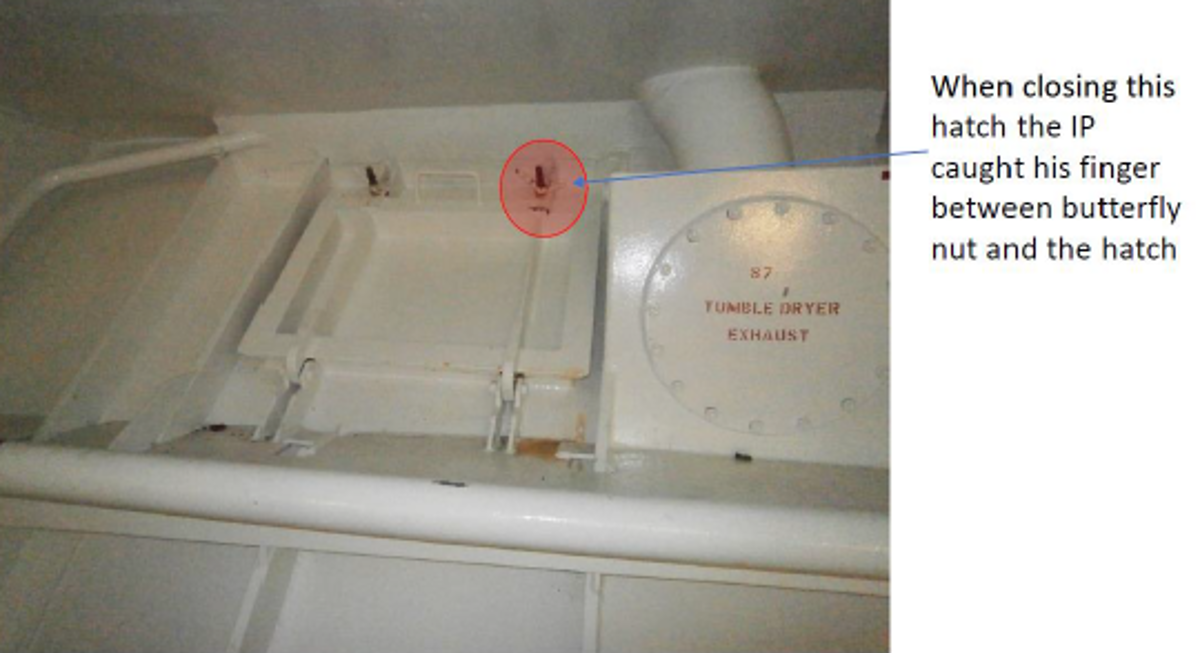Finger trapped and injured whilst moving hatch covers
- Safety Flash
- Published on 22 November 2019
- Generated on 15 July 2025
- IMCA SF 27/19
- 2 minute read
Jump to:
An AB sustained a serious finger injury when his finger was trapped while attempting to secure a forecastle hatch whilst securing the area following a mooring operation.
What went wrong?
The hatch being secured was heavy and in such a position that it required the AB to reach or climb up to open, close and secure it; this awkward arrangement resulted in finger entrapment.
The task was a common one using equipment from the vessel’s original design and build, and therefore the arrangement had not been questioned. The hazard had not been adequately covered in the task risk assessment, and not reported to vessel management as a safety concern.


What actions were taken?
Our member made the decision that due to the weight, arrangement and position of the hatch being unsafe for handling, it would not be used for mooring operations and a temporary alternative arrangement put in place for running lines. Engineering solutions available:
- Fitting a motion damping strut, such as a fluid-filled gas strut, or
- Fitting a hatch in a different position that allows for safer handling and improved safety and ergonomics for passing lines.
In addition, hazard hunts conducted to identify other similar issues that may be present around the vessel.
Featured Safety Flashes
-
IMCA SF 06/19
5 April 2019
-
-
IMCA SF 25/18
9 November 2018
-
-
IMCA SF 04/16
5 February 2016
-
IMCA SF 01/12
25 January 2012
IMCA Safety Flashes summarise key safety matters and incidents, allowing lessons to be more easily learnt for the benefit of the entire offshore industry.
The effectiveness of the IMCA Safety Flash system depends on the industry sharing information and so avoiding repeat incidents. Incidents are classified according to IOGP's Life Saving Rules.
All information is anonymised or sanitised, as appropriate, and warnings for graphic content included where possible.
IMCA makes every effort to ensure both the accuracy and reliability of the information shared, but is not be liable for any guidance and/or recommendation and/or statement herein contained.
The information contained in this document does not fulfil or replace any individual's or Member's legal, regulatory or other duties or obligations in respect of their operations. Individuals and Members remain solely responsible for the safe, lawful and proper conduct of their operations.
Share your safety incidents with IMCA online. Sign-up to receive Safety Flashes straight to your email.